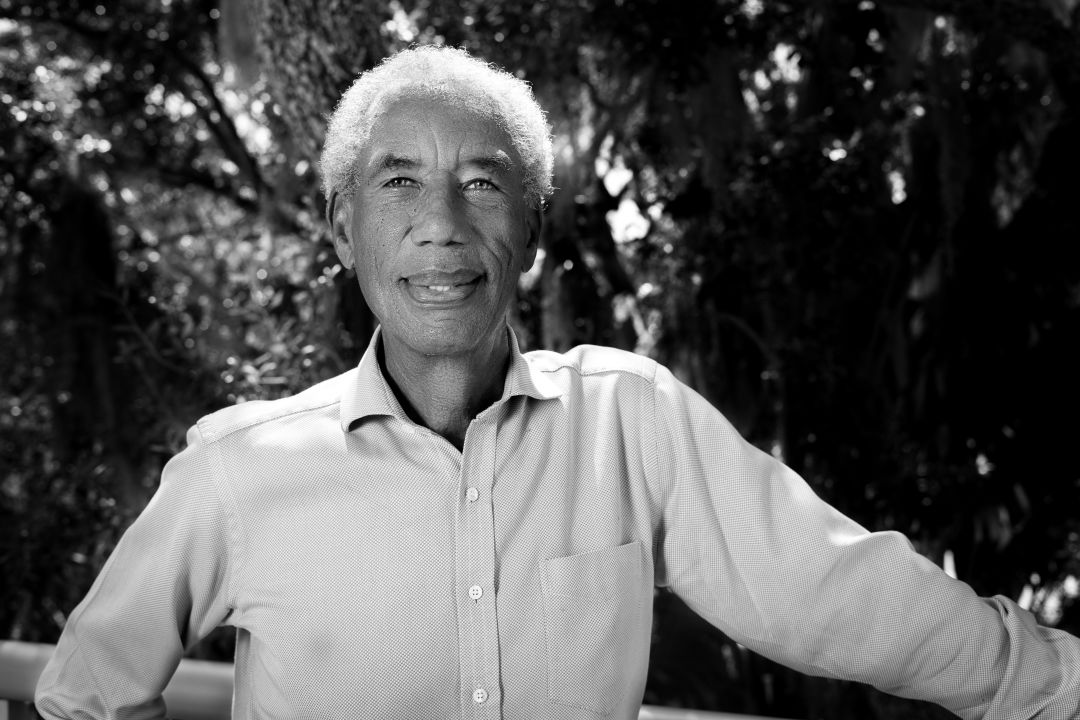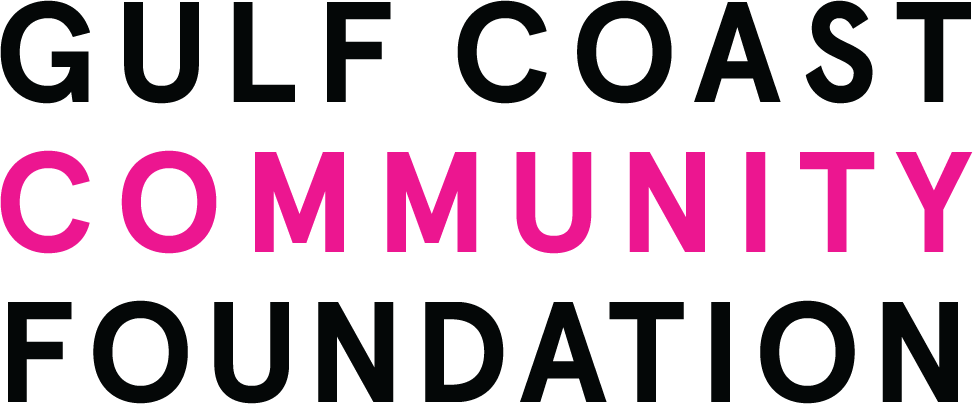Investment Banker Ronald T. Gault on Civil Unrest and the Importance of Using Your Voice
This article is part of the series In Their Own Words, proudly presented by Gulf Coast Community Foundation.

Ronald T. Gault
Image: Michael Kinsey
Ronald T. Gault was born on the South Side of Chicago in 1940 and went on to pivotal roles in public service and corporate America.
Gault, 79, earned his B.A. at Grinnell College in Iowa, where he received a full scholarship and was one of only eight Black students on campus. He then earned a master’s degree in public policy and management from the University of Michigan.
After graduation in 1964, Gault devoted his years to government service and became involved in civil rights, first with the Urban League and later with Community Relations Service.
When Richard Nixon was elected president, Gault left government work—“I couldn’t work for Nixon,” he says—and moved to New York City, where he served as a Ford Foundation program officer from 1969-1978. Later, he worked as a senior adviser in Mayor Ed Koch’s office.
Gault then became an investment banker at First Boston Corp. and JP Morgan, eventually serving as head of JP Morgan’s office in Johannesburg, South Africa, after the demise of apartheid. After retiring from banking in 2012, he returned to the U.S. and moved to Sarasota with his wife, Emmy- and Peabody-award-winning journalist Charlayne Hunter-Gault. He now focuses on mentoring young men and working with philanthropic organizations.
Tell us about your early experiences in Washington, D.C.
“As a Grinnell College sophomore in 1960, I was accepted to a program that took me to Washington, D.C., for a semester [to study] the Supreme Court, executive branch and Congress.
“One day, I went into the Rayburn Building for a haircut at the building’s barbershop. The atmosphere immediately became chilly. I’ll never forget the barber, with his full head of silver-gray hair, putting up his hand to stop me and saying, ‘Don’t step in here, son.’ He continued, 'I know who sent you'—meaning a civil rights group—'but I’m not cutting your Black hair in here.’
“Even though I wasn’t representing as an activist, I replied that the law required him to do so. I also pointed out that Rep. Bill Dawson [a Black congressman representing Chicago] had an office in the same building, to which the barber answered, “Yeah, well, go ask him where he gets his hair cut, then.”
“I was crushed. I left the building, hopped on a streetcar and rode it for hours.
I called my friend Art Waskow, who worked with Americans for Democratic Action, and shared my story. While on the phone, I overheard the office calling the Washington Post. The next morning, my barbershop experience was a front-page story. The barber said that they’d cut ‘anybody’s’ hair. I was elated, but didn’t go back to test the shop’s newfound desegregation policies.
“This incident is a footnote in the evolution of my own thinking and understanding of the power of both the press and race—then and today.”
Your parents were willing to stand up. Your father, formerly a factory foreman, became a baseball scout for the White Sox after writing a letter to the Chicago Sun Times about how the team repeatedly failed to cultivate and sign top prospects. Your mother, Lillian, was captain of the 83rd precinct in the Third Ward. When was your first foray into the political system?
“In the ’60s, I walked the South Side district with my mother, who was a precinct captain for a well-populated ward for Ralph Metcalfe, the Olympian who later became a congressman. She was masterful at listening and responding to the needs of constituents. She had the reputation of registering the most voters and raising needed funds to support many community activities.
“In 1964, I tested my political bones when I went to work with the Urban League where I ran a successful campaign in the South Side to help Lyndon B. Johnson get elected.
“Later that same year I found my calling at the Community Relations Service, which was created under the Department of Justice. It focused on the seminal issue of the decade—racism in America—and served as a mediator for peace in communities across the country. We worked with elected officials, police and activists to diffuse conflicts. I worked for director Roger Wilkins, who was also an assistant attorney general in the Johnson Administration and one of the highest-ranking Blacks to serve in the executive branch at that time. He had serious racial justice credentials, and his uncle was Roy Wilkins, the well-respected and renowned head of the NAACP.
“In 1966, the civil rights movement turned its focus on the endemic racism in the north. One of the target states was Illinois, where attacks on protestors unfolded similar to those on the Edmund Pettus Bridge. Dr. Martin Luther King Jr. and the Southern Christian Leadership Conference marched in Cicero [a suburb of Chicago] where the police formed a barrier between the demonstrators and the anti-protest crowds, which was lobbing glass bottles, bricks and other missiles over police lines into the peaceful protestors. King said he was never more fearful for his life than during that march. The CRS field agents and I were on the front lines of the negotiations to achieve goals for both sides without resorting to violence”
You were also witness to the 1964 Gin Bottle Riot in Dixmoor, Illinois, while you were working at the DOJ. What has changed since then and what has stayed the same?
“The thing that has stayed the same is that civil unrest is the most readily available vehicle for citizens to protest their living conditions. Yesteryear, it was the Black community protesting. Today, we have witnessed the changing nature of the discontented, which has crossed geographical boundaries and racial lines.”
How did you feel about working for the DOJ when President Nixon was elected in 1968?
“Our team cared about what happened to the agency, which was ahead of its time. The scuttlebutt suggested that Nixon did not feel the same and that a new director would be appointed.
“We mapped out a strategy to promote a list of successors to Wilkins, and it included Ben Holman. We approached Sen. Ed Brooke, who co-wrote the Civil Rights Act, and later was the first Senate Republican to call for Nixon's resignation in light of the Watergate scandal. At the time, Nixon owed Brooke a political favor and we knew it. In 1969, Nixon appointed Holman to assistant attorney general in charge of the CRS, where Holman served for the next eight years.
I wished Holman well, but had to take my leave. I couldn’t work for Nixon, and that ended my government work.”
Where did you go next?
“On May 3, 1969, at 28 years old, I loaded up my brand-new burgundy Mustang, with four on the floor, and headed from D.C. to NYC with two crystal champagne glasses, one suitcase filled with suits and shirts, and my girlfriend Charlayne. We checked into the Chelsea Hotel on a Friday, and the following Monday morning I left for my first day as a program officer at the Ford Foundation, where I stayed for nine-and-a-half years until I took a managing director position with First Boston Corp. in 1978.”
How did you get involved in the reconstruction of South Africa?
“Following the demise of the apartheid government, South Africa was a highly regarded investment banking target. The western world was enamored with President Nelson Mandela, and New York City put a premium on being in synch with the country’s political leadership.
“Many apartheid-sympathetic institutions were embargoed and could not do business in the “new” South Africa. The bank I was with, The First Boston Corp., was looking enter the market. I came up with the idea for a mentoring program, which we called the Professional Development Program (PDP), to bring resources to the country with training and support for young, upwardly mobile Black South Africans. I made a convincing case to Mayor David Dinkins and the City of New York, proposing new initiatives. The plan crossed all lines of corporate entities, from business to law to banking.
“The South African participants were placed in major U.S. banks and corporations for six months, where they were exposed to innovative business practices. Afterward, they returned to South Africa to enhanced careers in their chosen fields. We committed to continued mentorship as a part of our contract, and over a 10-year period, we counseled 126 Black professionals—both women and men.
“Dinkins, Mandela and Thabo Mbeki, Mandela's first deputy president who was later elected to serve two terms as president on his own, were impressed with the initiative. In 1995, I became PDP chairman, and Mbeki worked with us to ensure its successful launch.”
What would you say to those in the Black community who believe their vote does not count?
“That was a big debate in my family when I was a kid. For years, my father had little confidence in the efficacy of the vote. On the opposite end of that argument was my mother, who was a forceful advocate in Chicago’s political forum. My father became a political convert when Harold Washington [Chicago’s first black mayor] was elected [in 1983].
“The American democratic system is not without flaws, but it’s what we have to work with. By being active, you can make an impact. It’s not easy. It’s not perfect. But in terms of available options, it remains the [best] opportunity for Blacks to improve the quality of our lives and our loved ones.”
What do you want your white friend/neighbor/colleague/community to be doing right now?
“Listen with an open mind and know the difference between the violence that’s often reckless and irresponsible and the legitimate claims that Black people have. Look around and you will see conflagrations of injustice, unfair treatment and unequal employment opportunities. Do not fall victim to the distraction exhibited by a minority cluster among the protestors. Separate those actors out from the central issue.”
Listening to Black Voices is a series created by Heather Dunhill




